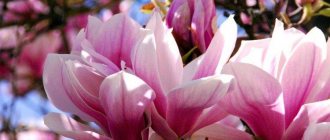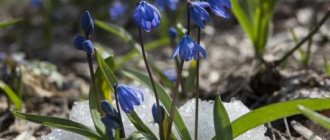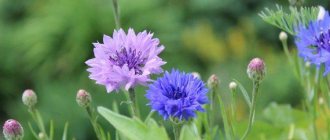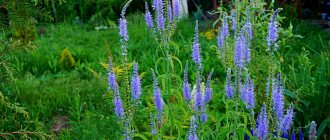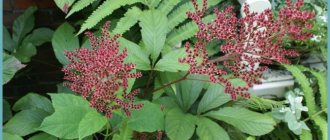Physalis is an exotic plant of the Solanaceae family, which has more than a hundred varieties. Where does physalis grow? In nature, it can be found in European, Asian countries, and America. Its name can be literally translated as “bubble” because of its bright orange-red cup. On gardening forums you can find other names for physalis, for example, marunka, earthen cranberry or emerald berry. The plant is rare in our country. About 15 varieties of physalis grow in gardens.
general information
Physalis grows into a fairly large shrub thanks to its branching stems. The average height ranges from 60 to 120 cm. Moreover, in 1.5 months one such bush easily produces up to 150 small fruits.
Physalis is the largest genus in its Solanaceae family. In nature, it is more common in South and North America, but is already quite common in Asia and Europe. The name means “bubble” from Greek, which is easily explained by the shape of the fruit.
Among the physalis there are annuals and perennials. As they grow, the shoots become lignified, and the shrub resembles a real tree. During the flowering season, single flowers bloom along the entire length of the shoot, after which swollen spherical fruits with a characteristic aroma are formed.
In addition to its active use in cooking, physalis has many medicinal properties. And all thanks to the high content of beneficial acids and minerals. In folk medicine, even the leaves and roots of the plant are used to prepare decoctions.
Photo: pxhere.com
Homeland of the plant
In Russia and Europe, physalis has become widespread as an ornamental plant. In this territory, it is practically not consumed as food and is not grown on an industrial scale, limiting itself to sowing adjacent areas and park areas. But in the countries of Central and South America, the plant is popular as a healthy ingredient in desserts and drinks, as well as as an independent berry.
Types of physalis
All types and varieties of physalis can be divided into two large categories - decorative and edible. Their purpose is obvious, and they are all good in their own way. Here are some of the most popular varieties!
Alkekengi
Decorative physalis, also called red lantern. But in fact, the fruits are not only red, but also yellow or orange.
Photo: etsy.com
Franchet
A very effective decorative variety. No less bright cherry fruits are hidden in a bright orange cup. This bush is often used to decorate the landscape.
Photo: commons.wikimedia.org
Longifolia
A tall ornamental shrub stretches up to 2 m. The fruits of this physalis are light, delicate cream in color, with ribbed edges.
Photo: botanichka.ru
Vegetable physalis
This is the main edible species that arrived in our latitudes straight from Mexico. Its fruits are fleshy and juicy, which is why it is called tomatil in its homeland.
Photo: pixabay.com
Strawberry physalis
It is also Peruvian, and it is an extensive dessert type. In texture and taste, its fruits are more similar to the berries we are used to than to the same tomatoes. The fruits of berry physalis are several times smaller than those of vegetable ones.
Photo: flora2018.ru
Loosestrife (50 photos): types, planting and care in open ground
Effect on the body
According to experimental studies, it has been established that physalis has the following medicinal properties:
- painkillers;
- antitussives;
- hemostatic;
- antiviral;
- antibacterial;
- anti-inflammatory;
- antioxidant;
- cleansing;
- choleretic;
- diuretics;
- immunoactive.
The healing properties of the bladderwort are due to the unique chemical composition represented by the following active substances: physalin, tannin, cryptoxanin, pectin, sapononins, flavonoids, polyphenol, vitamins A, , , , , organic acids (tartaric, malic, succinic, sinapic, palmitic and stearic), minerals (magnesium, iron, zinc, phosphorus, potassium, calcium). Ripe fruits contain tanning and coloring components, carbohydrates, proteins, fiber, and fatty oils.
A decoction of physalis roots is used to normalize the menstrual cycle. A water infusion of fruits - to relieve swelling, the consequences of bruises (as compresses), and eliminate coughs due to colds.
Physalis fruits are used to treat:
- gout;
- dropsy;
- depriving;
- rheumatism;
- bronchitis;
- inflammatory reactions of the urinary tract;
- diseases of the respiratory system.
Freshly squeezed bladder berry juice helps with gonorrhea, hypertension, dermatoses, and dysentery.
Beneficial features:
- improves intestinal motility;
- removes excess fluid, heavy metal salts and toxins from the body;
- strengthens bones and tooth enamel;
- supports the functioning of the heart muscle and circulatory system;
- fights viral infection, strengthens the immune system;
- relieves swelling of the upper respiratory tract;
- normalizes blood pressure, acid-base balance;
- improves digestion and metabolism.
Contraindications – diseases of the digestive system.
Physalis care
It doesn’t matter for what purpose you plant physalis. All its varieties are very similar in requirements, so we’ll share the basic subtleties of care!
Temperature
Physalis is a frost-resistant plant that does not require special temperature conditions. The best conditions for active fruiting are 15-20 degrees. To quickly germinate seeds, you need 10-12 degrees, and only for berry varieties - from +15.
Photo: eldomo.ru
Lighting
Physalis loves good light, but is not too keen on direct sunlight. Ideally, there should be light shade on the site during peak hours.
Photo: ggreen.ru
Watering
Physalis needs frequent intensive watering, especially young plants. Overgrown seedlings are even planted in holes with water for better rooting.
Photo: cveti-rasteniya.ru
The soil
Despite its exotic origin, physalis is completely unpretentious to the composition of the soil. But if you want the bush to bear fruit abundantly, you still need fertile soil. You should not plant physalis after other nightshades, but you can after cabbage or cucumbers.
Photo: vasha-teplitsa.ru
Fertilizers and fertilizing
Physalis needs to be fed regularly, and organic matter is great for this. You can prepare mineral fertilizers yourself from nitrate, superphosphates and potassium salt in equal proportions.
Photo: greensotka.ru
Trimming and pinching
Physalis does not need to be shaped, trimmed, pinched or pinched. The more and more actively it branches naturally, the more magnificent the flowering will be and the more impressive the harvest.
Photo: tkani1.ru
Harvesting
The fruits of physalis can be safely left on the bush until the end of autumn. Together with the plant, they normally tolerate cold snaps and night frosts. It is more convenient to harvest when the calyx is already dry. But if you plan to store the fruits for a long time, they should be slightly unripe.
Photo: distano.ru
Wintering
The entire above-ground part of perennial ornamental varieties can be safely cut off for the winter and used for bouquets. After this, mulch the area with peat until spring. But it is recommended to completely destroy annual varieties after harvesting.
Photo: eldomo.ru
Castor bean (50 photos): types, care and planting in open ground
Harvesting
Physalis matures gradually. The first crop appears and ripens on the lower branches of the plant. If it is not collected in time, the fruits will fall to the ground. If the weather is dry, then the fruits in the sheaths on the ground will retain their beneficial properties for a long time. In humid climates, it is necessary to collect immediately so that larvae and parasites cannot get into the cover.
The fruits can withstand the first autumn frosts, but experts advise harvesting before frost so that the fruits retain all their beneficial properties.
For long-term storage, fruits must be picked in an unripe state. For storage, it is necessary to leave the fruits in their natural “packaging”.
Planting and propagation
In warm regions, physalis can be planted with seeds directly into open ground closer to the beginning of May. The seeds are simply placed in furrows and then thinned out after the seedlings appear. Or you can plant them before winter - in October, but then it is better to mulch the area.
In mid-latitudes, physalis is planted only through seedlings, but it will begin to bear fruit earlier. 1-1.5 months before transplanting into open ground, the seeds are planted in separate pots and left warm until the seedlings appear.
Keep humidity levels low because small sprouts are often susceptible to blackleg. And regularly ventilate the seedlings. If you plant physalis in containers, you can pick it up with the appearance of 2 leaves.
After the formation of 5-6 leaves, physalis can be transplanted into open ground in cloudy weather. It is best to plant bushes in a checkerboard pattern with a distance of at least 0.5 m, because they will branch intensively. The depth of the planting hole is up to the first true leaf.
Photo: 5stihiynn.ru
Folk remedies
Infusions and decoctions of physalis are used in the treatment of chronic diseases. There are several pathologies for which auxiliary treatment with home remedies is recommended:
- gastrointestinal diseases with low acidity and reduced peristalsis;
- inflammation of the urinary tract;
- atony of the gallbladder;
- inflammatory joint pathologies;
- skin bacterial infections.
External and internal remedies are used in courses of 7-14 days, depending on the severity of the disease.
Water infusion
To prepare a non-alcoholic infusion, take 500 g of ripe berries and pass through a meat grinder. Dilute the resulting slurry in 2 liters of warm filtered water, shake well and leave for 1 hour at room temperature. After the composition has infused, strain it through a thick cloth and pour into an opaque airtight container.
The infusion can be stored in the refrigerator for no more than 2 days. You need to drink the product on a full stomach, 0.5 cups after each meal.
Alcohol infusion
A tincture containing alcohol is intended for the treatment of infected external wounds. To prepare it you will need the following components:
- 30 g dried physalis root;
- 10 dry leaves;
- 3-4 ripe fruits;
- 250 ml vodka.
Grind the dry ingredients in a mortar and place in an opaque glass container. Grind the fruits into a pulp, grind it through a sieve to remove large pieces. Combine all ingredients with vodka, mix thoroughly and seal tightly.
The alcohol tincture is ready for use after 14 days of aging in a dark, cool place.
Physalis pests and diseases
Chaotic yellow spots on leaves and shoots may indicate a viral mosaic. Sick plants must be destroyed, but in the early stages treatment with medications can help.
Penicillosis manifests itself in the form of foci of rotting on fruits when damaged or cracked. To do this, the fruits must be collected in a timely manner, and in case of high humidity, the seedlings must be sprayed with potassium permanganate or fungicides.
Different fungal diseases can manifest themselves in different ways - in the form of spots, watery areas, plaque. The treatment is always the same: remove damaged plant fragments and treat the seedlings with fungicides.
The most common pest of physalis is slugs. They need to be caught mechanically using traps. You can sprinkle the row spaces with tobacco or phosphates, and also use special preventive medications.
Photo: dzagigrow.ru
Muscari (50 photos): types, planting and care in open ground
Biological description
Being a representative of the Solanaceae family, physalis has adopted many of the properties characteristic of it. In particular, the plant does not have a very strong stem, which does not allow it to grow straight and support several kilograms of fruits, however, if there are possible supports, the plant is able to grow upward, entwining them. If there are no supports, the length of the stems rarely exceeds 60-70 cm.
The leaves of the plant are quite large, up to 12 cm long and 6 cm wide, the flowers are mostly white, consisting of 5 petals. A characteristic feature of the physalis flower is the transformation of the calyx of the flower into the outer shell of the fruit , the same one that looks like a Chinese lantern. Its size can significantly exceed the size of the fruit itself and even be larger than a chicken egg.
Physalis blooms
One short stem can contain up to two dozen fruits, and even more fruits can be found on stems artificially tied or attached to supports. The size of the fruit depends on the variety and ranges from 5 to 7 cm. The yield of physalis can reach up to 5 kg per plant.
Let's consider the types of physalis presented in our climate:
Physalis – photo
And if you still have little idea of what physalis really looks like in the garden, this selection is especially for you!
Photo: etsy.com
Photo: domashniecvety.ru
Photo: tunnel.ru
Photo: actaplantarum.org
Photo: mlrd.net
Photo: dsnews.ua
Photo: fotokto.ru
Photo: pxhere.com
Photo: dispatchist.com
Photo: kiberis.ru
Photo: fotokto.ru
Photo: agroklub.com
Photo: agrotehnika36.ru
Photo: budgetstories.ru
Photo: youtube.com
Photo: nazya.com
Photo: 1bizibord.ru
Photo: cherdacha.ru
Photo: proroslo.ru
Photo: tunnel.ru
Photo: botanichka.ru
Photo: joinfo.com
Photo: flickr.com
Photo: peperonciniperhobby.it
Photo: cpgdaily.com
Did you like the post? Subscribe to our channel in Yandex.Zen, it really helps us in our development!
